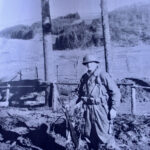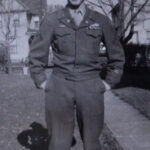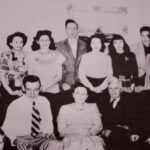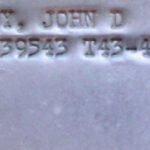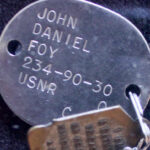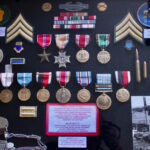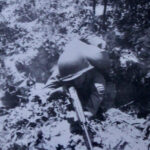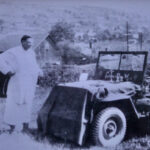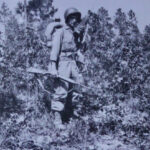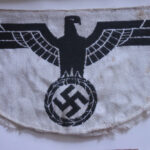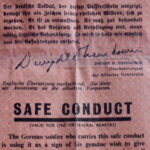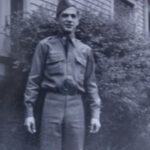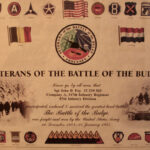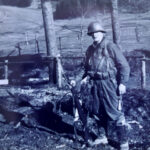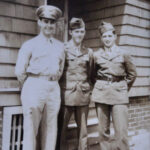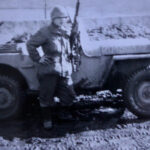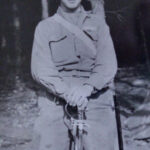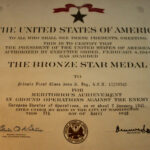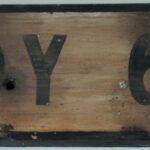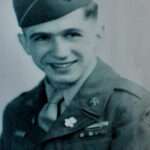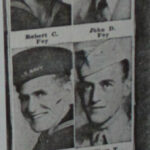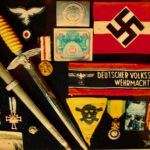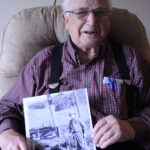John Foy was born October 12, 1925 in Rochester, New York. He grew up there against the backdrop of the Great Depression, in a large family of ten children where four of the brothers would serve during the war. In the 30s John went to school and did all the normal things for a teenager in the 1930s, which included working as a newspaper boy and projectionist to help support the family. John’s three older brothers were in the service by the time he turned 18, but as John had done well in high school he was accepted into the Army Specialized Training Program, or ASTP, whereby young men of draft age could become part of the enlisted reserves and take coursework in engineering and applied sciences. John had never been far from Rochester, and he chose to attend Cornell University because it was close to home. As it turned out the army needed infantry more than educated officers, and the ASTP was brought to a close: John headed to Fort Dix, and then Fort Benning, where he went through basic training – and had brief dreams of becoming a paratrooper. His division then went to New York for a few days before shipping out on the HMS Queen Elizabeth, sailing solo and crossing the Atlantic in four days to Glasgow, Scotland. They then moved by train to Manchester, England and after a month they continued south, crossing the English Channel to Le Havre on an LCT. John was in the 347th Infantry Regiment of the 87th Infantry Division, and after arrival in France they set across France on their way to Metz, where they saw their first combat. John was in the jeep most of the time in the early days, taking supplies to the front and evacuating the wounded. From Metz the 87th moved north into Belgium and into the heart of the Battle of the Bulge. John’s jeep hit a mine during this time, and he was reassigned as a machine gunner, experiencing intense combat – and freezing winter temperatures – on the front lines. Next they would cross the Rhine River and the Siegfried Line and enter into Germany itself, encountering more bitter fighting. John’s regiment would be among the first Americans to enter Buchenwald and its subcamps, so John at age 19 confronted the full horrors of Nazism, becoming a liberator and a witness. After that they fought their way through Germany, ending near the Czech border. Along the way they took prisoners and watched the war creep towards its inevitable end. When Germany surrendered John and his unit were told they’d be on their way to Japan, so they were moved to LeHavre, France and were ready to ship out. The SS America took them to New York City, and John spent a few more months in the army, keeping himself busy while he awaited his discharge. He returned to Rochester and took a spot in the family plumbing business, also marrying and raising his own family and even joining the naval reserve.
Videos
Click next video below to keep watching
